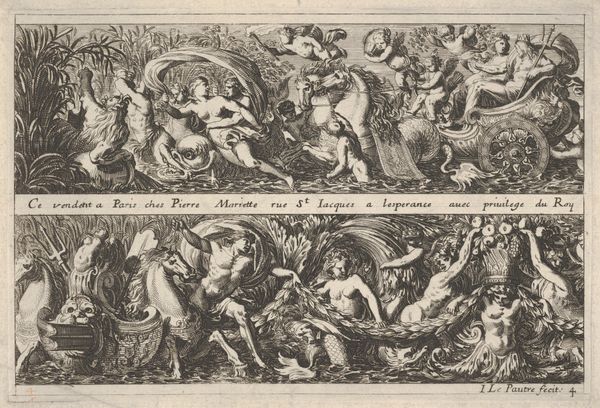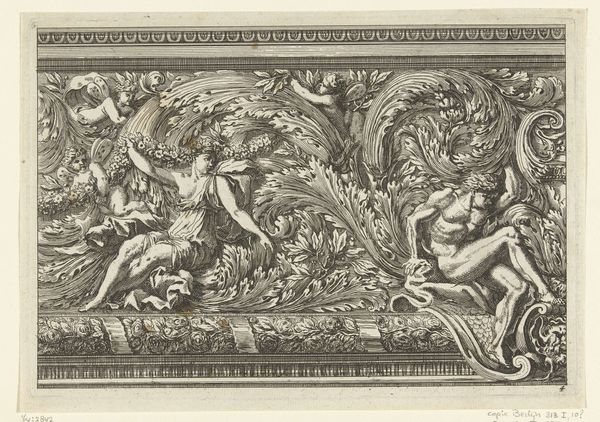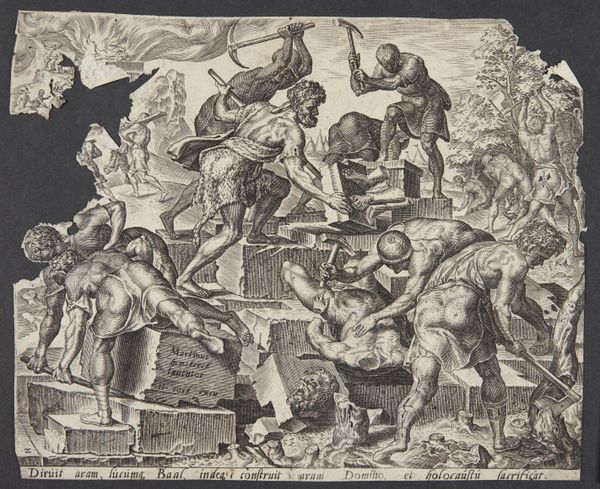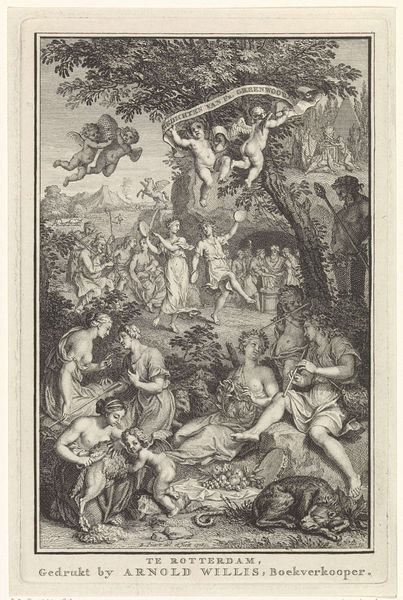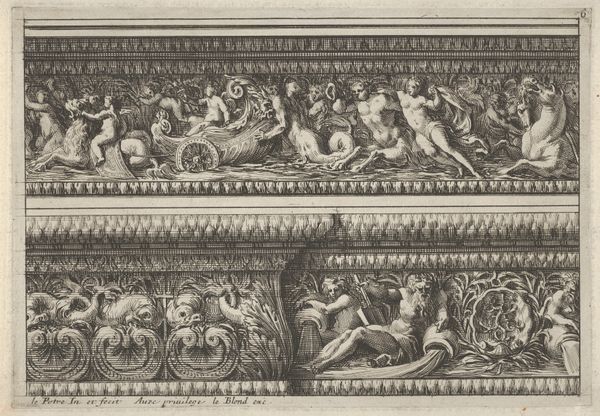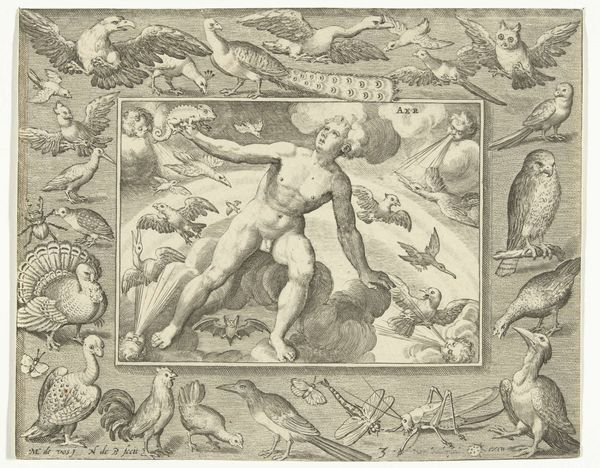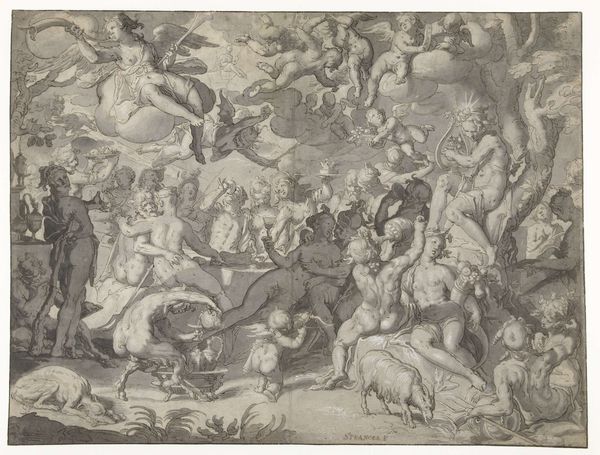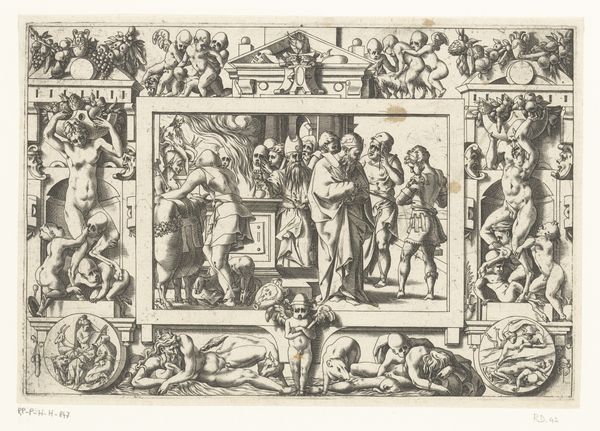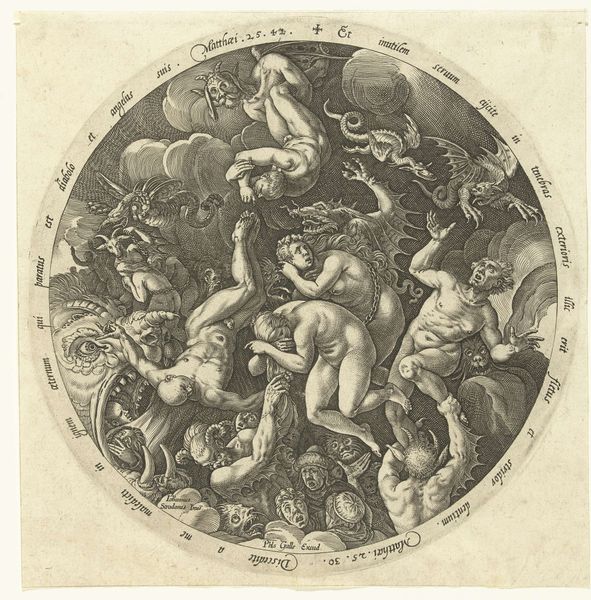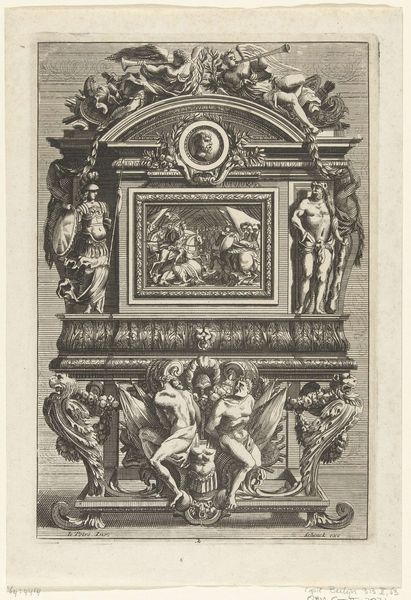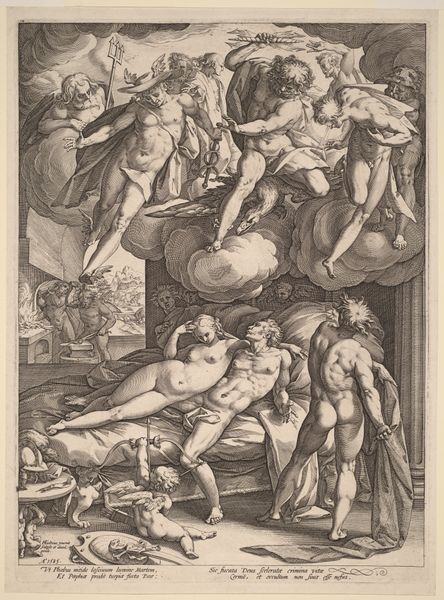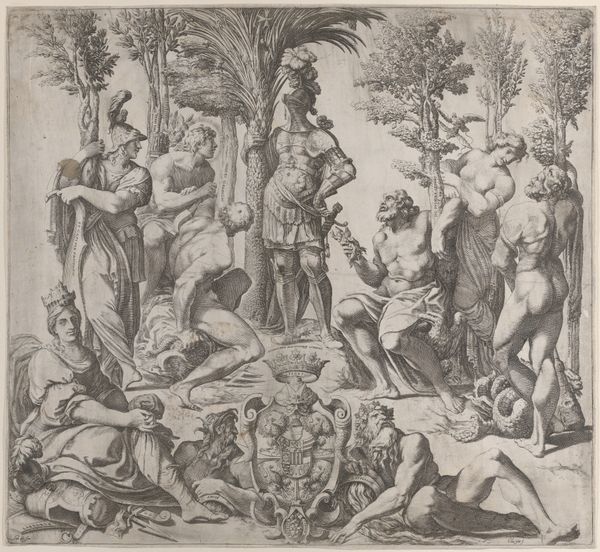
engraving
#
allegory
#
baroque
#
figuration
#
history-painting
#
engraving
Dimensions: height 147 mm, width 218 mm
Copyright: Rijks Museum: Open Domain
Editor: Here we have "Two Friezes," an engraving from around 1664 by Jean Lepautre. It's held at the Rijksmuseum. Honestly, it's a bit chaotic! So many figures crammed into one space. What’s your read on it? Curator: Chaotic, perhaps, but deliciously so! Lepautre, he was one of those artists who just *loved* to fill every nook and cranny. Think of it as a baroque buffet, brimming with allegorical goodies. Notice how he plays with light and shadow? Each character practically bursts forth from the page. Does it remind you of anything? Like maybe garden design or the decoration of some fancy interior of the period? Editor: I can see the garden connection. All those twisting vines and figures sort of become architectural. The bodies look so... dynamic? Is that the right word? Curator: Absolutely! Baroque art aimed for *motion*. The swirling drapes, the exaggerated poses. This was the era of opera, after all – high drama was in the air. And each frieze seems to whisper its own tale. The top one feels celebratory, abundant, perhaps hinting at a bacchic revelry with its overflowing cornucopia... what about the lower? Editor: Darker, definitely. Almost violent? It feels less celebratory and more... like a struggle. The light is starker too. Curator: Precisely! See how Lepautre uses the interplay between these two contrasting moods, upper and lower, dark and light, in order to enrich this design, meant to delight, awe, and possibly even provoke debate in its time! What do you think, is it effective, this dynamic contrast? Editor: I do like how the contrast pushes me to make up a story to link the upper scene to the lower one. And all the ornament and detail give the eyes so much to do. Curator: Agreed. And maybe that's the magic: a constant invitation to decode, interpret, to dive deeper into its swirling world of symbol and form. It leaves a mark, does it not?
Comments
No comments
Be the first to comment and join the conversation on the ultimate creative platform.
